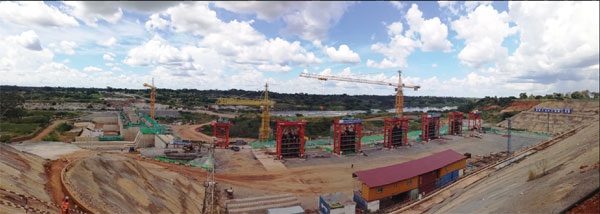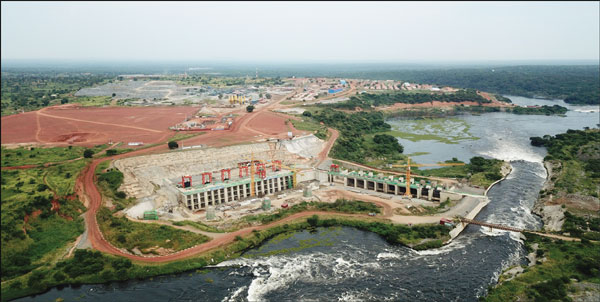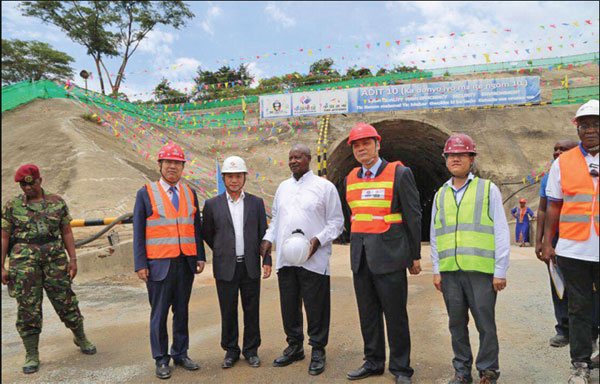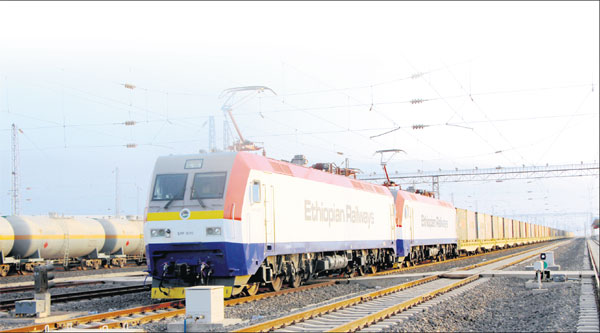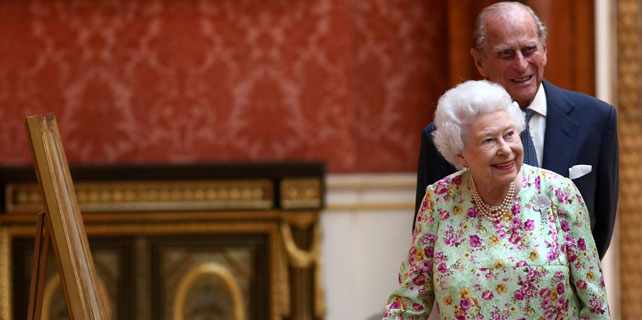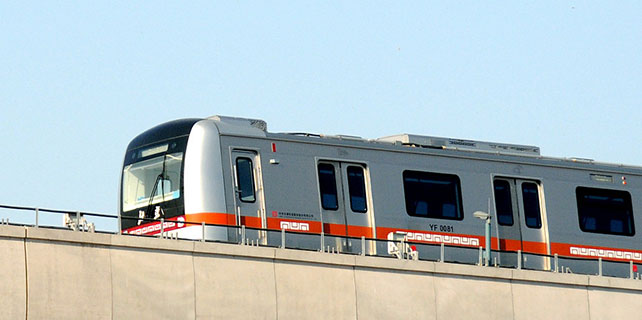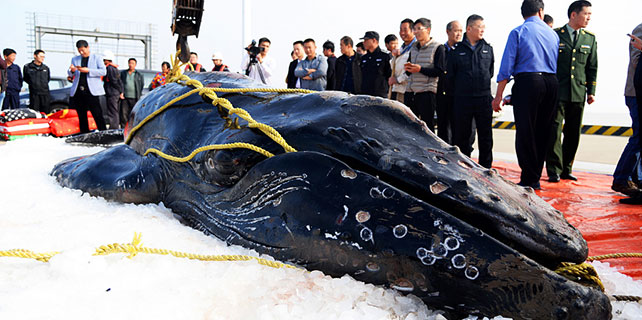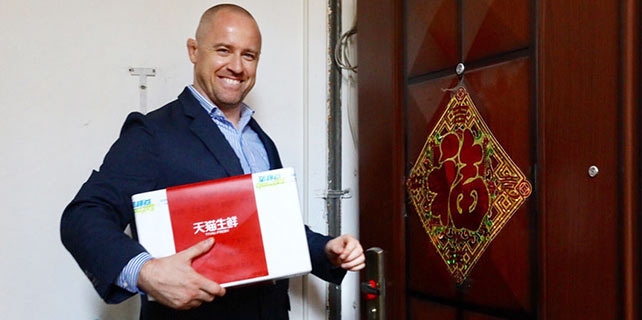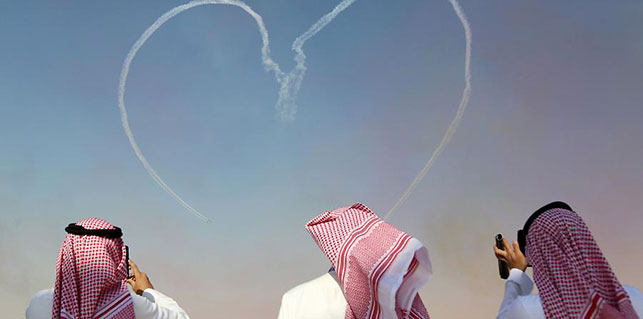Hand in hand
Optimism abounds as Chinese, African leaders gather in Beijing to map out a common future
The third FOCAC summit, to be held on Sept 3 and 4 in Beijing, comes at a time of deepening economic and investment ties between China and Africa, and is seen as a crucial opportunity to discuss sustaining cooperation and supporting common prosperity.
The 2018 Forum on China-Africa Cooperation Summit, which will bring together Chinese and African leaders, aims to build a closer China-Africa community with a shared future and will further dovetail China's Belt and Road Initiative with African development. It also is expected to set a new path for a higher level of China-Africa cooperation and deepen people-to-people exchanges.

|
Karuma is a 600-megawatt hydropower station being built by Sinohydro in Uganda. It will generate 4 billion kilowatt-hours every year when completed. Photos Provided to China Daily |
|
From left: The Addis Ababa-Adama expressway, the first in Ethiopia, was contructed by China Communications Construction Co; the standard gauge railway from Addis Ababa to Djibouti was contracted by China Rail Engineering Corporation and China Civil Engineering Construction Corporation. |
President Xi Jinping will kick off the summit with the keynote speech on Sept 3, and African leaders will speak throughout the day.
Xi and South African President Cyril Ramaphosa will separately chair two rounds of discussions the next day.
As China-Africa ties have deepened, trade volume between China and Africa has risen from $10.6 billion (9.1 billion euros; £8.3 billion) to more than $170 billion between 2000 and 2017. China's outward foreign direct investment stock in Africa grew from $500 million to about $41 billion - an increase of 82 times - over the same period, according to data from the Ministry of Foreign Affairs.
According to a 2017 report by global consulting company McKinsey, more than 10,000 Chinese companies are operating in Africa. Ninety percent of these are privately owned, and about one-third are engaged in manufacturing. Eighty-nine percent of their employees are local, and two-thirds of the businesses offer skills training to their employees, according to the report.
Fewer than 2,000 African students attended Chinese universities in 2002, but that number surged to about 50,000 by 2015 - more than those studying in the United States or the United Kingdom, according to data from the Ministry of Education. At the 2015 FOCAC summit, China pledged 30,000 scholarships for African students.
In a speech last week to students leaving to study in China, Ethiopian Prime Minister Abiy Ahmed said: "For Ethiopia and China, the sky is the limit. We can go far to develop the next generation to take responsibility and to work for their country." He added that he would like to see the number of Ethiopian students leaving for study to double next year from this year's 1,000.
According to a 2018 study by the Brookings Institution in Washington, "China's role on the African continent has been defined by the financing of more than 3,000 largely critical infrastructure projects."
In addition, Deborah Brautigam, a professor and director of the China Africa Research Initiative at Johns Hopkins School of Advanced International Studies in Washington, wrote in The Washington Post: "That's a lot of debt. Yet by and large, the Chinese loans in our database were performing a useful service: financing Africa's serious infrastructure gap. On a continent where over 600 million Africans have no access to electricity, 40 percent of the Chinese loans paid for power generation and transmission. Another 30 percent went to modernizing Africa's crumbling transport infrastructure. ... On the whole, power and transport are investments that boost economic growth. And we found that Chinese loans generally have comparatively low interest rates and long repayment periods."
Much recent Chinese investment has focused on either building infrastructure that eliminates bottlenecks to creating a good business environment, or on creating jobs for Africa's young and increasingly educated workforce. In a 2016 research paper, David Dollar, now a senior fellow at the Brookings Institution and formerly a senior World Bank and US Treasury Department official, concluded that China's involvement in Africa has been shifting from natural resources to human resources, technology transfer and capacity building.
Beijing University economist Justin Yifu Lin wrote in 2017 that "China is preparing to relocate 85 million light manufacturing jobs from higher-income East Asian economies, including its own, to Africa. This represents an important opportunity for Africa to create more and better employment opportunities for its citizens, thereby reducing poverty and supporting dynamic growth". Many of these jobs no longer fit the comparative advantage of China, because Chinese wages have risen sharply and Chinese companies have focused on upgrading their technology, he said.
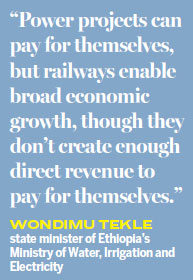
President Yoweri Museveni of Uganda, in a speech to the second annual Uganda-China Economic Investment and Trade Cooperation Forum in Kampala on Aug 16, stressed the importance of new Chinese-built infrastructure in making his country economically competitive by overcoming two bottlenecks - infrastructure and industrialization. Overcoming infrastructure bottlenecks is essential to lowering the cost of business and attracting industry since African countries cannot attract the migrating industry if there are high costs of electricity and transportation, he said.
Museveni said Uganda hopes to lower its cost of electricity from the current 15 cents per kilowatt-hour to 5 cents, Museveni said.
Chinese companies have built or are building many transportation projects throughout the continent. Last year, Nigeria and China Civil Engineering Construction Corp concluded a contract agreement worth $11.1 billion for the construction of the 1,402 kilometer Lagos-Calabar coastal railway line. CCECC recently signed a contract to build a standard gauge railway from Kampala to link up with the railway from Nairobi to Mombasa, Kenya, that was built by China Road and Bridge Corp, a subsidiary of China Communications Construction Co. CCCC also built the Addis Ababa-Adama Expressway in Ethiopia and is completing the Kampala-Entebbe Expressway in Uganda. There are many other such projects.
According to a survey by People's Daily, Chinese companies have built or have been contracted to build hydropower plants in at least 24 out of the 54 African countries. Sinohydro Corp alone is building 70 percent of the large hydropower plants in Africa, according to Li Xiaogang, Sinohydro's authorized representative in East and Southern Africa. In northeast Africa's Nile Basin, Sinohydro built the Merowe and Roseires dams in Sudan and is now completing the Karuma Dam in Uganda.
China International Water & Electric Corp has also almost completed the Isimba Dam in Uganda. When completed, the two new dams in Uganda will double the electricity generation capacity of the country, says Lloyd Rutaremwa, an electrical engineer on the Isimba hydropower project.
Meanwhile, some types of infrastructure raise relatively short-term revenues and can directly fund payments on the debt. For example, Li, of Sinohydro, calculates that the Karuma Dam that his company is building in Uganda will receive enough revenue from sales of electricity to pay back the loan in seven to 10 years.
Other types of infrastructure, especially transportation projects, seldom raise enough direct revenue to pay for themselves directly, but they are enablers of broad economic growth.
Zhang Zhenhai, executive director of CCECC Ethiopia Construction PLC, says: "Railways are infrastructure projects. You need to look at it from the economic and the social benefits. The transportation efficiency and cost are very, very important. It is basic and fundamental to economic growth. You should consider the social benefits. The railway is efficient, provides faster transportation and supports other sectors. It is not a short-term business. You need to consider railways together with the dry port, with the port, with economic corridors, with industrial parks, with booming exports. That is a combined government solution."
Commenting on the importance of the new standard gauge railway from Addis Ababa to Djibouti, Wondimu Tekle, state minister of Ethiopia's Ministry of Water, Irrigation and Electricity, says: "Power projects can pay for themselves, but railways enable broad economic growth, though they don't create enough direct revenue to pay for themselves. In Ethiopia, we have almost completed some industrial parks, including agri-processing industrial parks. These need logistics. Our direct way to the port is the Addis Ababa to Djibouti railway. Without this, it is very difficult to sell our products to the international market."
All of these projects were put out for international bids by the national governments. Some observers might wonder why Chinese companies win so many of the bids.
First, China's companies have a lot of experience and technology from building infrastructure in their own country and have become very efficient at it.
Li, of Sinohydro, notes that there is very little dam building going on in the US or Europe, so many companies and workers have lost competency in this area. In combination with the lower costs of materials and labor, this experience allows Chinese companies to be the lowest-price bidder in many cases.
Xia Nenghai, general manager of the Uganda branch of China International Water & Electric, says Chinese bids often come in at 10 to 30 percent less than bids by Western companies.
Dilamo Otore, former head of the Trade Bureau of Addis Ababa, says large Chinese State-owned enterprises also compete with each other, raising quality and lowering price.
The second reason Chinese companies win so many bids is that African nations say they have found it much easier to deal with Chinese companies, which they have found are more willing to adapt to the situation in developing countries.
Wondimu, of the Ethiopian Ministry of Water, Irrigation and Electricity, says: "If there is a problem or delay, the Europeans stick to the agreement on paper. They are interested in short-term profits. You need to assess a developing country's situation and look also to the future. Chinese companies go beyond the project. They help on health projects and build local roads."
Xia, of China International Water& Electric, says: "Chinese are very good at working; they just want to complete this work quickly. Sometimes, we have to use our own finance instead of waiting for their payment. A US or European company cannot do this."
"Chinese companies are thinking about the benefit of the employer. They don't delay the work and they don't want to sue you. Our bids are cheaper because our human resources are cheaper and our materials are cheaper and quality is good," he says.
Xia adds: "China does not have any political push in these projects. We build the project, then we leave. It is just pure business. We are a company, not an NGO or something like that."
The third reason cited for Chinese winning many bids is that Chinese government policy banks, especially the Export-Import Bank of China, often provide loans to support the projects. As of June 2016, the China Exim Bank was supporting 600 projects in Africa, with a total outstanding loan balance of more than $45 billion, according to Exim Bank data.
Wen Yingzheng, general manager for East Africa of China First Highway Engineering Co, a division of CCCC, says of the role of Chinese policy in supporting infrastructure projects in Africa: "The Belt and Road Initiative and FOCAC are based on the same ideas - good communications, policy communication, facilities and infrastructure connections, financial connections and connection of the people's wills."
Contact the writers at davidblair@chinadaily.com.cn
|
A bird's-eye view of Karuma hydropower station in Uganda. Photos Provided to China Daily |
|
Ugandan President Yoweri Museveni inspects the Karuma Dam project site on Aug 23. |
|
A freight train carrying goods from Djibouti to Addis Ababa in Ethiopia. |
( China Daily Africa Weekly 08/31/2018 page1)



